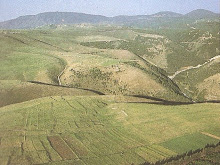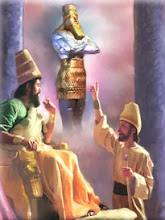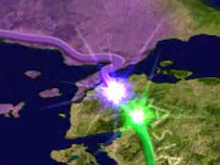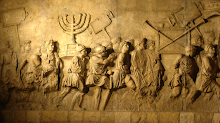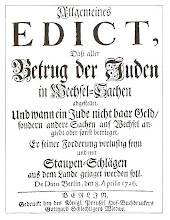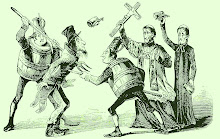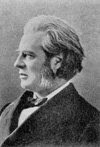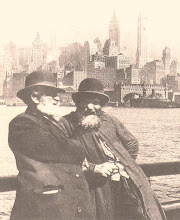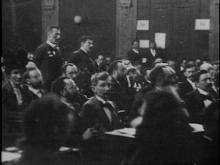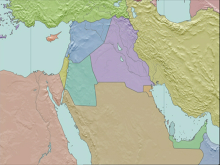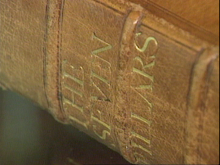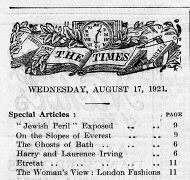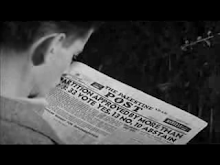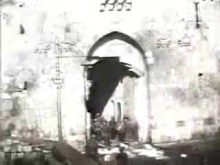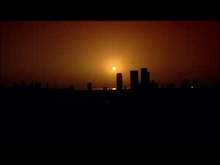Following on from the point that this blog had hoped to make contact with Dr Victor Pearce who has used Signpost considerations in his own work, it’s possible to confirm that he has now been presented with a copy of The Signpost Years notes. He was clearly interested during the talk we held over the phone and his views will be welcome. He will need some time to consider the text.
Victor’s work involved apologetics in biblical Prophecy, Archaeology and Science, among other areas, and I reminded him that I had written to his ministry, The Hour Of Revival, 17 years ago on an observation based on one of Jesus’ miracles that seemed to have gone ‘wrong’ and even needed repeating!
Today, however, it looks as if that miracle was performed by Jesus with a deliberate view to its verification only in modern times: a kind of Scientific Signpost.
Simply stated, the 1992 letter to Victor noted that medics and philosophers such as John Locke had pondered for centuries what an adult person would actually see if vision could be given to an individual actually blind from birth. a)
No one knew because delicate eye surgery would need anaesthetics and means to immobilise eye movement, and such restorative operations only became possible within the last century.
But when Jesus heals such a case of a man totally blind, recorded at Mark 8:24, the immediate result bewildered bible readers for nearly 2,000 years. Having healed the man’s eyes, Jesus asks what he now sees. He says, ‘I see men, but they look like trees walking about.’ Jesus heals him again and ‘now he sees clearly.’
From the early work of vision restoration surgery, we know from pioneers such as Sendon that the initial visual experience of Jesus’ patient exactly matches those of modern day restorees. We know ‘they cannot identify by sight objects familiar by touch such as faces, knives and keys. But they can immediately follow moving objects around visually.’ b)
The healed blind man cannot separate between the visual appearance of trees and men, apart from the fact that he can see the latter moving around, and hence can differentiate them as such by motion.Those visually restored in operations lack visual learning and ‘shown a long and short stick, for example, will say they look somehow different but cannot identify which is shortest without touching them first.’ b)
And it is this ‘learned’ or cognitive component that Jesus now imparts in the ‘second’ and resolving part of the miracle.The biblical writer of Mark could not have known any of this, but even at the risk of making his revered Saviour Jesus look incompetent and bumbling, accurately reports the details, nonetheless, of what must have been a genuine healing miracle, yet verifiable as such only centuries later.
So, with the Signpost Years I also re-sent a copy of Victor’s own reply to these points above. Dated July 24 1992 he wrote ‘Thank you for your encouraging letter and especially your remarks about the healing of the blind man at Bethsaida. The information which you give certainly illuminates the reason why the man’s sight was confused at first. Your information will be very valuable to us.”
There are many examples of what we might call ‘Signposts in Science’, in the Intelligent Design movement, for example, and occasionally it might be interesting to include some others on this blog. They too constitute, collectively, evidence that demands a verdict on scripture and creation.
ref.
a) Locke., J. Essay Concerning Human Understanding (1690). Edited Nidditch., P.H Oxford Press. 1975.
b) Atkinson., R.C. et al. Introduction to Psychology. 8th ed. Harcort Brace Jovanovich pubs. NY. 1983. p 155
Karl krysko 9jan20
Introduction
ONE HUNDRED AND FORTY YEARS BEFORE the actual events came to fruition in the Middle East, two dedicated Bible scholars predicted accurately several key years in the then approaching conflict for tenure of the holy Land and Jerusalem, involving a long prophesised regathering of the Jews to their Promised Land, after nearly 2000 years of Diaspora.
Doctors Clarke and Guinness pointed well in advance to the coming years 1902, 1917, 1947-8 and 1967 AD, having based their predictions on the 2,500 year old Biblical book of Daniel.
Not only did their advance forecasts prove accurate decades later, but those key 'Signpost Years’ continue to mark events and developments in the holy Land, ever since their occurrence in modern times, that now represent the specific themes of serious contention in the struggle for Peace in that region today.
These following NOTES explain the rational behind the Clarke-Guinness thinking in as fast and concise a form as possible, and elaborations will follow. A second critical aim here is not to prove 'The Signpost Years' correct, but rather to use the scientific approach of attempting their falsification first. You can help either way by passing on any objective comments to this site.
PART 1 Is an Introduction and looks at each of the Signpost Years as they were foretold in the writings of Guinness and Clarke. It looks at many of the side issues and has a number of detailed footnotes.
PART 2 Looks at the period 1901 – 1903, and the first of the Signpost Years predicted by Clarke in 1825. This part explains the huge significance of the period and sets the scene for a further link that comes in Part 4.
PART 3 Begins to address some of the typical questions that might arise in the mind of the reader regarding the Signpost Years. Items are added to this from time to time as new considerations are brought to light. Again, feel free to contribute any comments that will add to those pages.
PART 4 Looks at the Signpost Years in the light of the last 6 months of Christ’s Ministry, and especially the last week of messages He imparted to His followers for the future. It ties directly back into PART 2.
*****************************************************
TO READ SPECIFIC 'CHAPTERS' CLICK ONE OF THE 'QUICK LINKS' LISTED DIRECTLY BELOW, AND TO READ OR ADD COMMENTS, CLICK 'POST COMMENT' AT THE END OF EACH CHAPTER THAT WILL OPEN AN EMAIL BOX TO SEND TO THIS BLOG.
AGAIN YOU CAN SIMPLY EMAIL TO:
karl@thesignpostyears.com
Click on QUICK LINKS to Parts 1 to 4 of the Signpost Notes:
Part 1: Introduction, Timelines, Conclusion.
Part 2: The SignPost Year 1902 AD and Max Nordau
Part 3: Q & A on the Signpost Years
Part 4: Jesus and the Signpost Years
Doctors Clarke and Guinness pointed well in advance to the coming years 1902, 1917, 1947-8 and 1967 AD, having based their predictions on the 2,500 year old Biblical book of Daniel.
Not only did their advance forecasts prove accurate decades later, but those key 'Signpost Years’ continue to mark events and developments in the holy Land, ever since their occurrence in modern times, that now represent the specific themes of serious contention in the struggle for Peace in that region today.
These following NOTES explain the rational behind the Clarke-Guinness thinking in as fast and concise a form as possible, and elaborations will follow. A second critical aim here is not to prove 'The Signpost Years' correct, but rather to use the scientific approach of attempting their falsification first. You can help either way by passing on any objective comments to this site.
PART 1 Is an Introduction and looks at each of the Signpost Years as they were foretold in the writings of Guinness and Clarke. It looks at many of the side issues and has a number of detailed footnotes.
PART 2 Looks at the period 1901 – 1903, and the first of the Signpost Years predicted by Clarke in 1825. This part explains the huge significance of the period and sets the scene for a further link that comes in Part 4.
PART 3 Begins to address some of the typical questions that might arise in the mind of the reader regarding the Signpost Years. Items are added to this from time to time as new considerations are brought to light. Again, feel free to contribute any comments that will add to those pages.
PART 4 Looks at the Signpost Years in the light of the last 6 months of Christ’s Ministry, and especially the last week of messages He imparted to His followers for the future. It ties directly back into PART 2.
*****************************************************
TO READ SPECIFIC 'CHAPTERS' CLICK ONE OF THE 'QUICK LINKS' LISTED DIRECTLY BELOW, AND TO READ OR ADD COMMENTS, CLICK 'POST COMMENT' AT THE END OF EACH CHAPTER THAT WILL OPEN AN EMAIL BOX TO SEND TO THIS BLOG.
AGAIN YOU CAN SIMPLY EMAIL TO:
karl@thesignpostyears.com
Click on QUICK LINKS to Parts 1 to 4 of the Signpost Notes:
Part 1: Introduction, Timelines, Conclusion.
Part 2: The SignPost Year 1902 AD and Max Nordau
Part 3: Q & A on the Signpost Years
Part 4: Jesus and the Signpost Years
Thursday, 5 March 2009
The SignPost Years
Click on QUICK LINKS 1 to 3 here for Signpost Year Notes:
Part 1: Introduction, Timelines, Conclusion.
Part 2: The SignPost Year 1902 AD and Max Nordau
Part 3: Q & A on the Signpost Years
Part 4: Jesus and the Signpost Years
Part 1: Introduction, Timelines, Conclusion.
Part 2: The SignPost Year 1902 AD and Max Nordau
Part 3: Q & A on the Signpost Years
Part 4: Jesus and the Signpost Years
